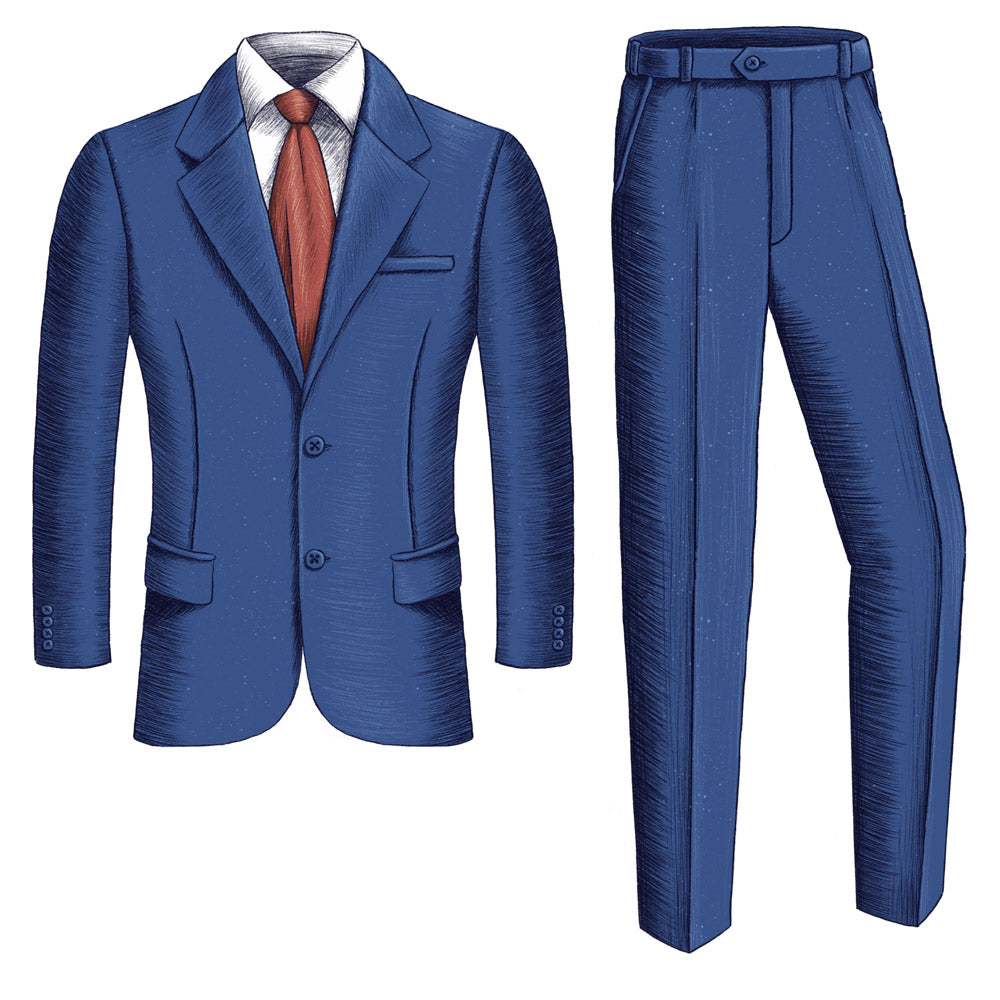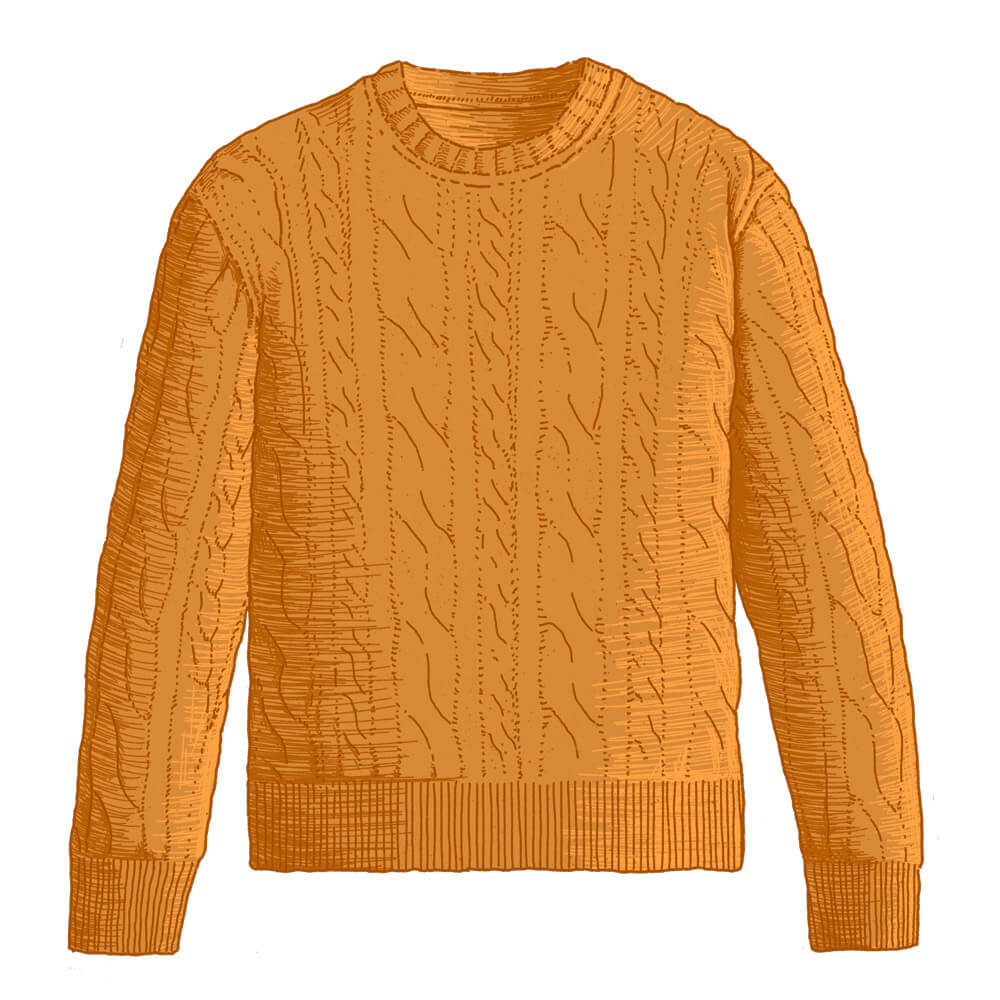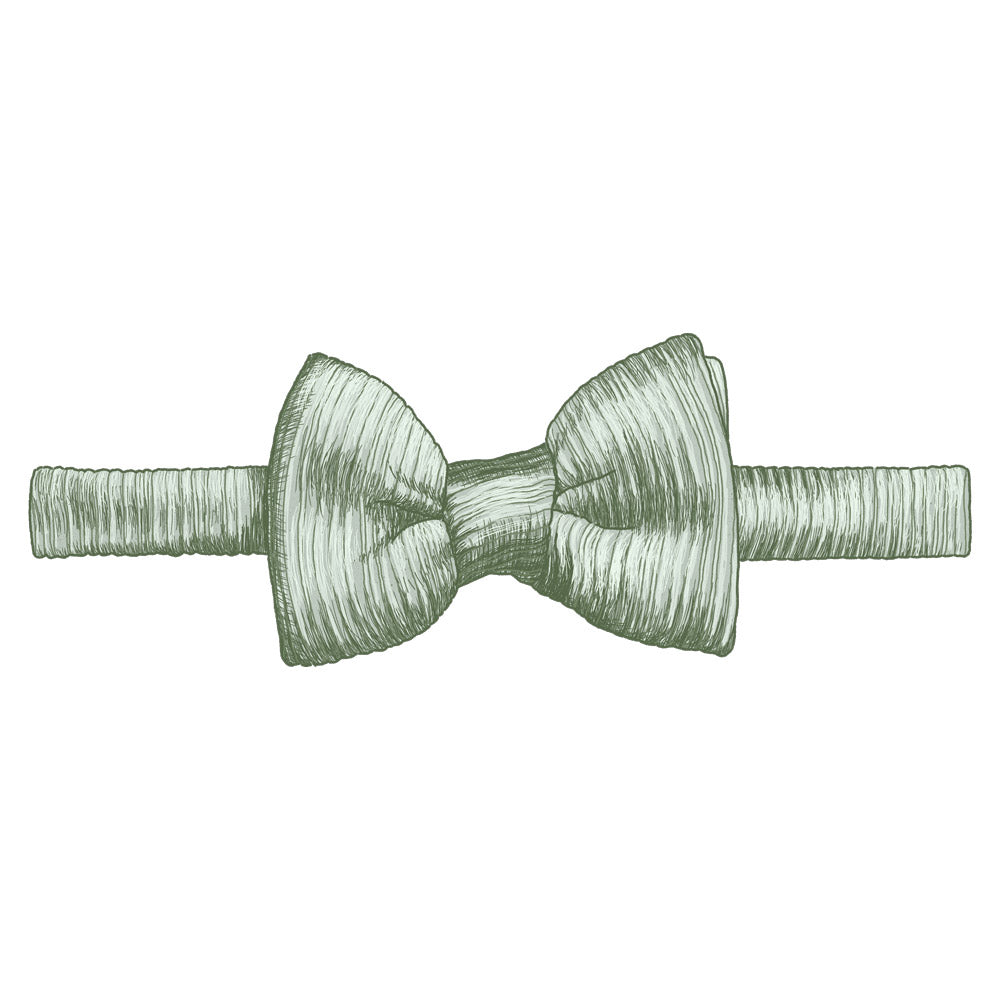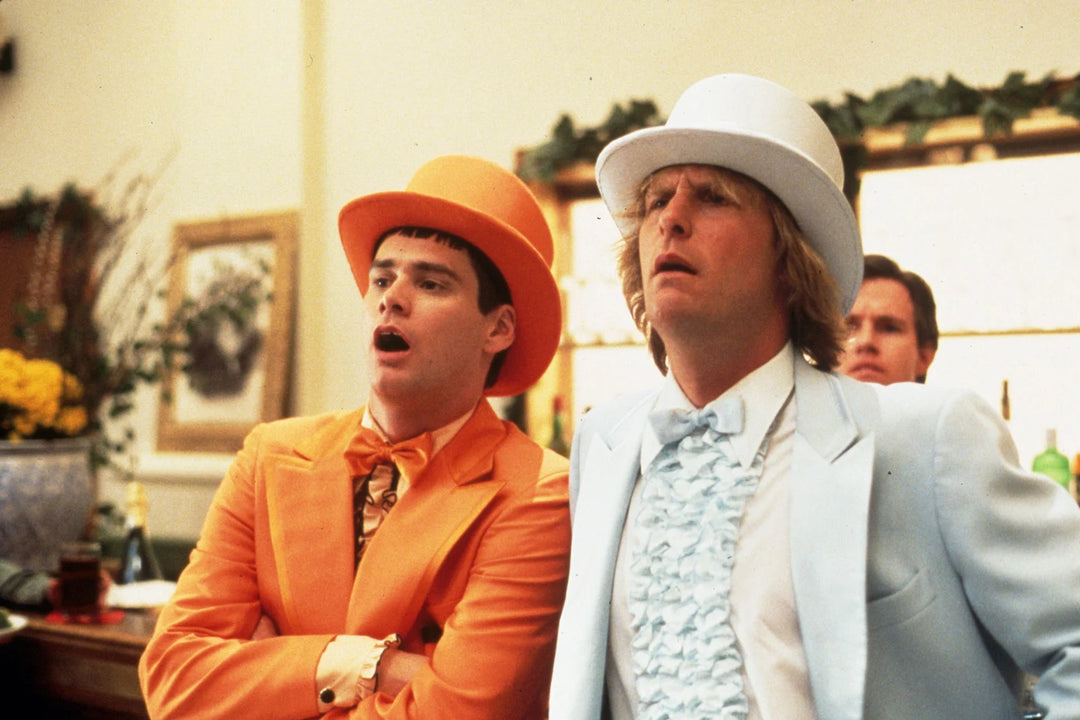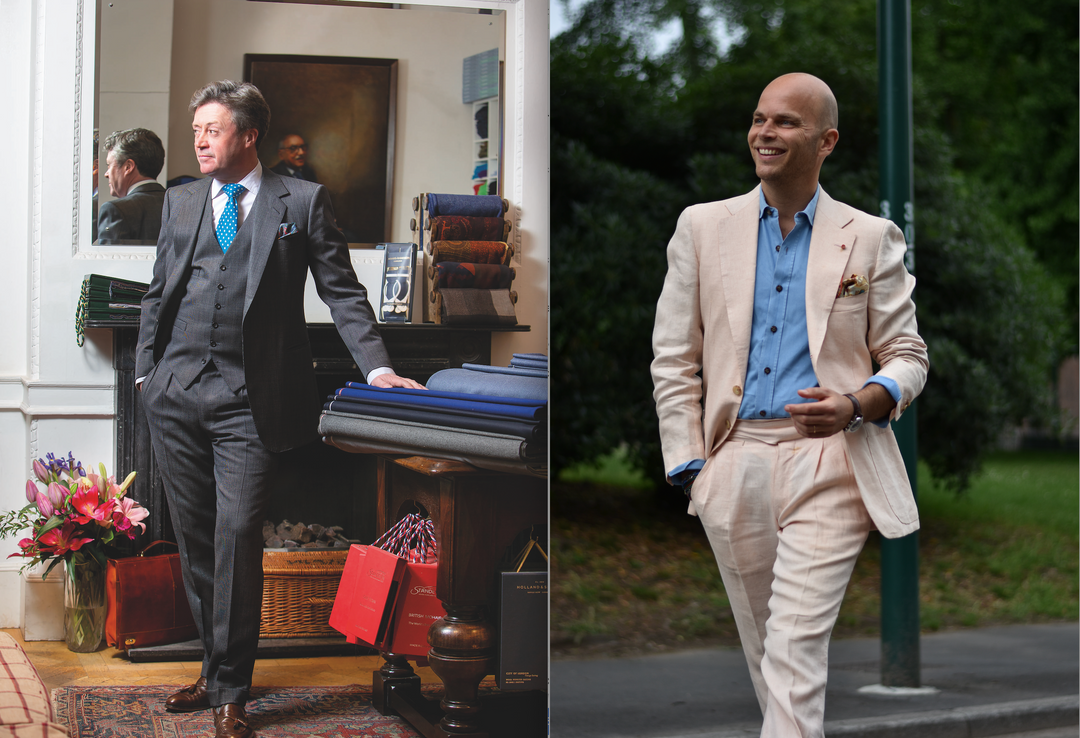Without a doubt, the majority of people buy their shirts off-the-rack instead of going custom, and that’s understandable since ordering a custom shirt is expensive. Buying a ready-to-wear shirt at your local department store isn’t necessarily a bad idea, but you have to make sure the shirt fits you well enough. It should never be too long, too short, too baggy, or too tight.
This article details the types of shirt cuts you can get, how different parts of the shirt should fit for comfort and appeal, when to get alterations, and why a made-to-measure shirt is another option worth considering.
Sizing and Shirt Cuts
Shirt Sizing
There are two ways that manufacturers decide to size a dress shirt, and this depends on their business model:
1. The most accurate method is based on two measurements: neck size and sleeve length.
2. The second and less accurate method is “alpha sizing” (S, M, L), which is not standardized across brands and also limits the range of sizes to just a few letters.
**When possible, go with the first approach.**
If you can get yourself measured, that can make things easier for you when picking out the shirt you want to try on.
Keep in mind that oftentimes manufacturers size up a little extra for comfort, so the numbers you see on the shirt will not be entirely accurate. In short, just use these numbers as a guide to help you save time.
But sizing is not the only thing to look out for when picking out a dress shirt...
Shirt Cuts
These days, you’ll find brands carrying different cuts of a shirt. The names of these cuts vary by company.
For example, Banana Republic carries Slim, Standard, and Tall. Macy’s carries Regular/Classic, Slim Fit, Extra Slim Fit, and Fitted/Athletic.
You should read the descriptions about each cut on their website to learn more, but in general, some cuts have a loose fit, some have a slim fit, and the others strike a happy medium.
Some brands also make special cuts for athletic physiques or people who have a longer torso. Find one that approximates your current build.
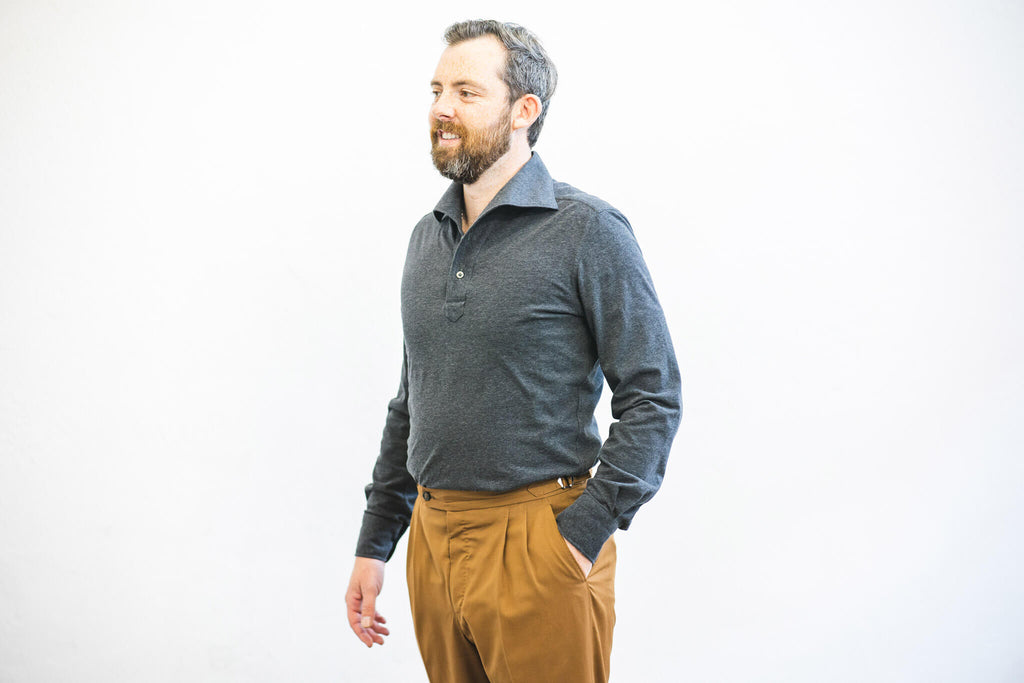
How a Shirt Should Fit
Now that you know about sizing and different shirt cuts that brands provide, you can start thinking about which off-the-rack dress shirts will fit you best without restricting range of motion. In other words, a dress shirt should never be too loose or too tight in any given spot. This won’t be perfect with a ready-to-wear shirt, but it must be close enough, so that any future alterations you choose to make will only be minor.
If you have a unique body shape that makes it difficult, if not impossible, to find a fitted garment, then pay a little extra for a made-to-measure dress shirt. The shirt will be made to your exact measurements from a pre-built pattern. This differs from a custom shirt made totally from scratch because it doesn’t take into account individual asymmetries, but it will be the closest thing you can get to custom without breaking the bank. Be sure to get your measurements taken by a professional, however. If you don’t, you risk ordering a made-to-measure shirt online that doesn’t fit you properly.
The Collar
Your shirt’s collar frames your face, and it’s the first thing a person sees when they’re talking to you. Your collar should never restrict your neck in a tie or without. Likewise, it should never be so loose that it droops, leaving too much space between your neck and the collar. Look for a comfortable middle ground that allows you to freely move your neck while keeping the collar as close to your neck as possible.
The Shoulders and Armholes
This is very important to get right. Look for the seam that separates the shoulder from the sleeve. The seam should sit on top of where your shoulder ends and the arm begins, or immediately where your shoulder starts to slope. Furthermore, the armholes have to be the right size. You’ll know the shoulders/armholes are too tight if you see wrinkles collecting around that area. If you feel discomfort when reaching forward, the armholes need to be lower. If there’s excess fabric, the armholes need to be higher.
The Sleeves and Cuff

There are two things to consider in a shirt sleeve: length and width. Try bending your elbow. If you feel tightness in your biceps or elbow, the sleeve width is too small. If you see too much fabric creating folds in your sleeve, it’s too wide. Ideally, the sleeve should be close enough to your body without restricting arm movement, and it should be wider in the upper arm while tapering beyond the elbow for a slimmer profile.
In terms of length, the sleeve cuff should just cover your wrist bone when buttoned. To make sure you have the correct length, unbutton your cuff while standing. It should end a little bit further down your hand, so when you do button it, it sits perfectly where your wrist ends, even as you move your arm. Just make sure the cuff is tight enough or this will defeat the purpose. There shouldn’t be much space between the cuff and your wrist, but enough space should be provided to easily allow for a watch.

The Chest and Yoke
Some people have wider chests than others, so it’s important to pick the correct cut that accounts for this. The yoke is the seam that runs horizontally across the back of your shirt from one shoulder to the other. For a proper fit it should end at or slightly beyond your shoulders. If there’s still tightness in your shoulder blades, try something on with more fabric around the chest. If you see pulling wrinkles when you button your shirt, it’s too small. If you have excess fabric spilling out from the side, it’s too big.
The Waist and Hips
As a shirt falls from the chest down to the waist, the fabric tapers. This is called the six-inch drop because there’s a six-inch difference between the chest and the waist (as a rule of thumb), but your mileage may vary. As it passes the waist, the bottom of the shirt widens again at the hips. If the bottom of the shirt is too constricting, avoid securing the lower buttons when tucking it into your waistband. As far as length goes, your shirt should be about 4 inches below your belt while it’s untucked. If everything is comfortable in your waist and bottom, you have a good fit.
Conclusion
That’s it! It sounds like a lot to remember, but keep a few things in mind if you forget everything else. First, it’s better to get a shirt that’s a little big than a shirt that’s too small. A shirt that has slightly more fabric can be altered if needed, and it won’t be uncomfortable to move around in. A tight shirt will prevent you from being able to move your arms, neck, and torso freely, and if you ever gain weight, you’re out of luck. Second, the ready-to-wear industry isn’t perfect, but they have quite a few options for different body types. If one brand doesn’t work for you, try another. Finally, consider a made-to-measure garment for a closer fit based on your personal measurements. This option has become affordable in recent years, so shop around.
For more information on made-to-measure shirts and alterations, please schedule an appointment. We look forward to helping you find the perfect fit!
